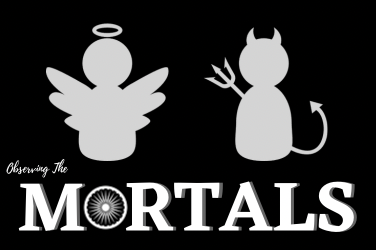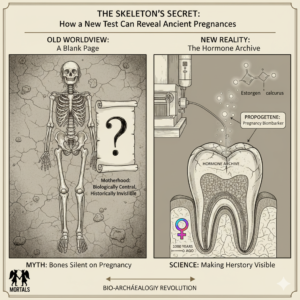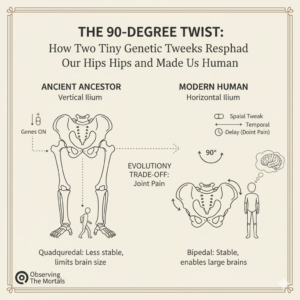“A good tool is an invisible tool.” So wrote the computer scientist Mark Weiser. In our modern world of smartphones, voice assistants, and gesture controls, that future seems to have arrived. Our technologies have become so intuitive, so frictionless, that they have vanished from our consciousness. But in a powerful historical analysis, Vanessa Chang argues this is a dangerous illusion. Technology is not a neutral servant that liberates our “pure” selves. Instead, it is a powerful architecture that actively organizes our bodies, shapes our senses, and gives form to a new “digital body.” This case study explores her argument that technology is not just something we use—it is something we become.
The Information Box
Syllabus Connection:
- Paper 1: Chapter 1.7 (Digital Anthropology), Chapter 1.2 (Relationship with other disciplines), Chapter 1.4 (Human Evolution: Bipedalism, Hand), Chapter 7 (Linguistic Anthropology)
Key Concepts/Tags:
- Digital Anthropology, Embodiment, Extended Mind Thesis, Media Anthropology, Bio-cultural Coevolution, Interface
The Setting: Who, What, Where?
This case study is an analysis of the ideas presented in Vanessa Chang’s 2025 book, The Body Digital. It is not a traditional ethnography but a sweeping anthropological history of technology. Chang analyzes the evolution of the human-machine interface by breaking it down into its component parts, examining the history of our hands, voice, ears, eyes, feet, and mind as sites of technological interaction. The essay traces a long and continuous line from ancient tools like writing to modern AI, arguing that they are all part of the same human story.
The Core Argument: Why This Study Matters
This essay provides a powerful, holistic framework for understanding how technology fundamentally remakes us, sensor by sensor.
- Technology is Not Neutral; It is an Architecture: The central thesis is that technologies are not simple, passive objects. They are architectures that “choreograph our behaviors.” The Jacquard loom, for example, didn’t just help weavers; it “automated the human hand,” transforming a weaver’s embodied skill into a programmable, replaceable code. This set the stage for seeing human labor as interchangeable parts.
- A History of Sensory Detachment: The essay traces a history of how technology has progressively severed our senses from our immediate physical bodies.
- Voice: Sound recording “severed the voice from the body,” giving it a new, independent, and reproducible existence.
- Ear: The music box and later, headphones, began to “divorce ears from other… bodies,” restructuring listening from a communal, public act into a private, insular one.
- Eye: Photography “initiated the detachment of seeing from the physical act of looking.” Our gaze, once anchored in the body, could now be captured, stored, and transmitted.
- The Digital Body as a “Mixed Reality”: The ultimate conclusion is that we are “already living in mixed reality.” Our bodies are now fully “entangled in a dance with data.” The ideal of technology is to dissolve completely, making the human body itself the final interface. This inverts the “ghost in the machine” (the mind controlling the body); in the digital world, the mind floats free, and our bodies are “assimilated by platforms” that puppet us.
- The “Extended Mind” Thesis: The essay uses the “Extended Mind” thesis (from philosophers Andy Clark and David Chalmers) to explain this. This thesis argues that our minds do not stop at our skulls. Tools like notebooks, smartphones, and AI become so integrated into our thought processes that they are part of our cognition. Our minds are porous and distributed, emerging from an ecology of brain, body, and tool.
The Anthropologist’s Gaze: A Critical Perspective
- Bio-cultural Coevolution in Action: This entire essay is a masterclass in bio-cultural coevolution. It shows how our biology (our hands, our bipedal feet, our brains) shaped our first tools, and how those tools, in turn, have continuously reshaped our bodies, our societies, and even our patterns of thought. The link between the freed hand of bipedalism and the later invention of writing is a key example.
- Critique of “Invisibility” and “Naturalness”: The author powerfully critiques the tech industry’s goal of making tools “invisible” and “intuitive.” An anthropologist would argue that this very “invisibility” is what makes technology so powerful and dangerous. When a tool vanishes, we forget to be critical of it. We stop seeing the corporate metrics, biases, and power structures that are baked into its design.
- A Call for a More Human-Centered Technology: The essay is not anti-technology. It is a call for a more conscious and critical relationship with our tools. The author urges us to ask: “Do they expand or contract our horizons? Do they sustain care, curiosity, and complexity—or reduce us to what can be measured and predicted?” This is a call for an applied anthropology of technology design, demanding that we build tools that serve human values, not just market efficiency.
The Exam Angle: How to Use This in Your Mains Answer
- Types of Questions Where It can be-Used:
- “Critically analyze the impact of digital technology on human social life and culture.”
- “How does the ‘Extended Mind’ thesis challenge traditional notions of human cognition?”
- “Discuss the relationship between technology and the body from an anthropological perspective.”
- Model Integration:
- On Digital Anthropology: “Digital anthropology analyzes how technology shapes our very being. As Vanessa Chang argues in ‘The Body Digital,’ interfaces are not neutral tools but ‘architectures’ that choreograph our behavior. The smartphone screen, for instance, has reshaped the way our hands, eyes, and even our minds connect to the world.”
- On the Extended Mind: “The ‘Extended Mind’ thesis is crucial for understanding our relationship with technology. It argues that our cognition is distributed, arising from an ecology of brain, body, and tool. Our smartphones are not just devices we use; they have become integrated components of our cognitive processes, outsourcing functions like memory and navigation.”
- For GS-1/Essay on Technology: “The history of technology, from writing to AI, has been a history of ‘sensory detachment.’ Sound recording severed the voice from the body, and photography severed the eye from the act of looking. As we increasingly outsource our senses and cognition to machines, we must critically ask if these tools are expanding our humanity or reducing us to data points.”
Observer’s Take
Vanessa Chang’s essay is a vital and timely anthropological intervention. It demystifies our modern tools by placing them in a long historical continuum, revealing that the smartphone in your hand is the direct descendant of the first written script. Her central warning is powerful: when a tool promises to “vanish” and make our bodies the “interface,” we must be more vigilant than ever. We risk becoming ghosts puppeted by the platforms we inhabit, forgetting that our flesh, blood, and bone are the very foundation of our humanity. This work is a profound call to action—to stop being passive users and to start being conscious architects of our digital-bodily future.
Source
- Title: How Technology Shapes How We Move, Speak, and Think (Adapted from The Body Digital: A History of Humans and Machines from Cuckoo Clocks to ChatGPT)
- Author: Vanessa Chang
- Publication: The Observatory (adapted and produced by the Independent Media Institute)





